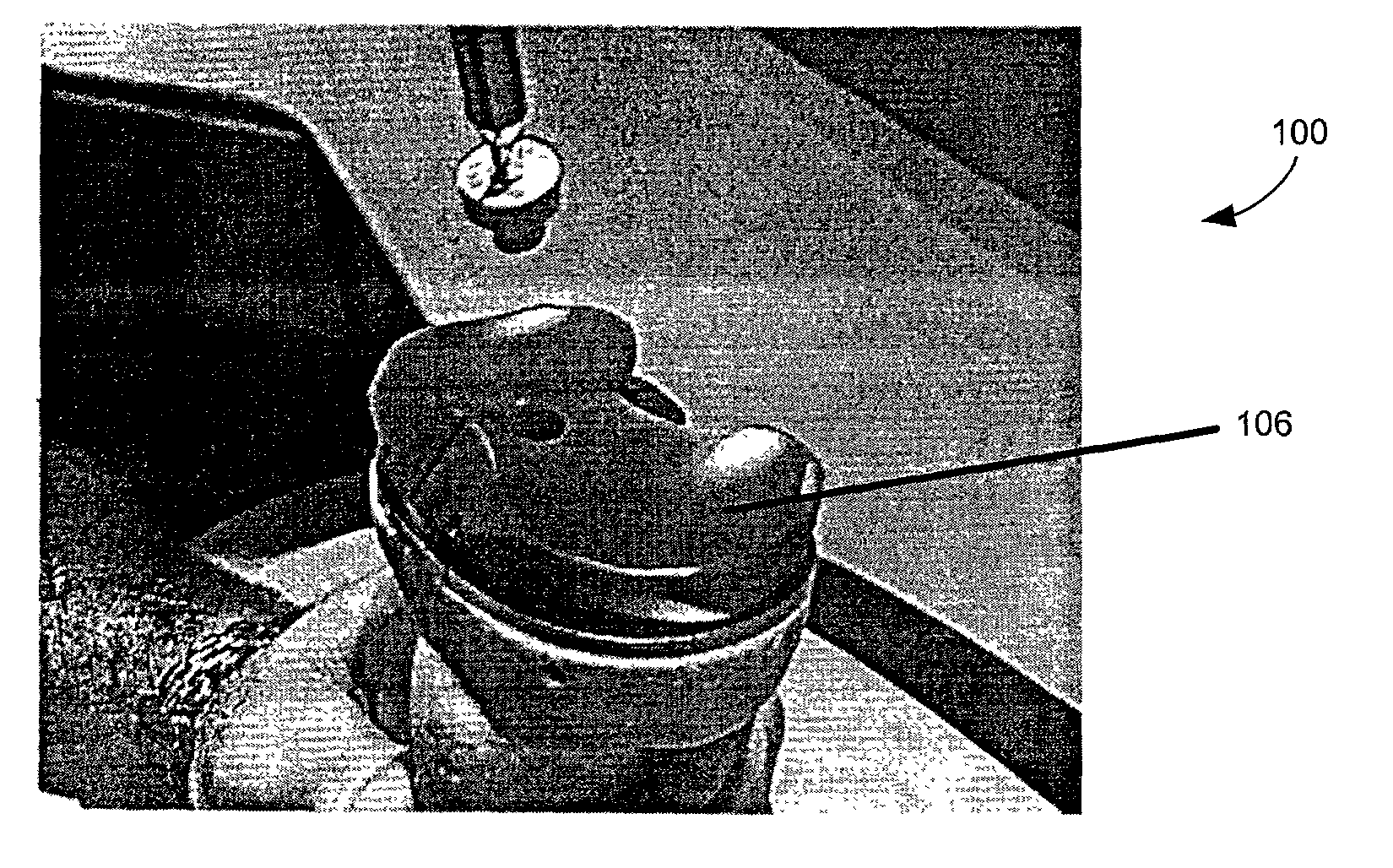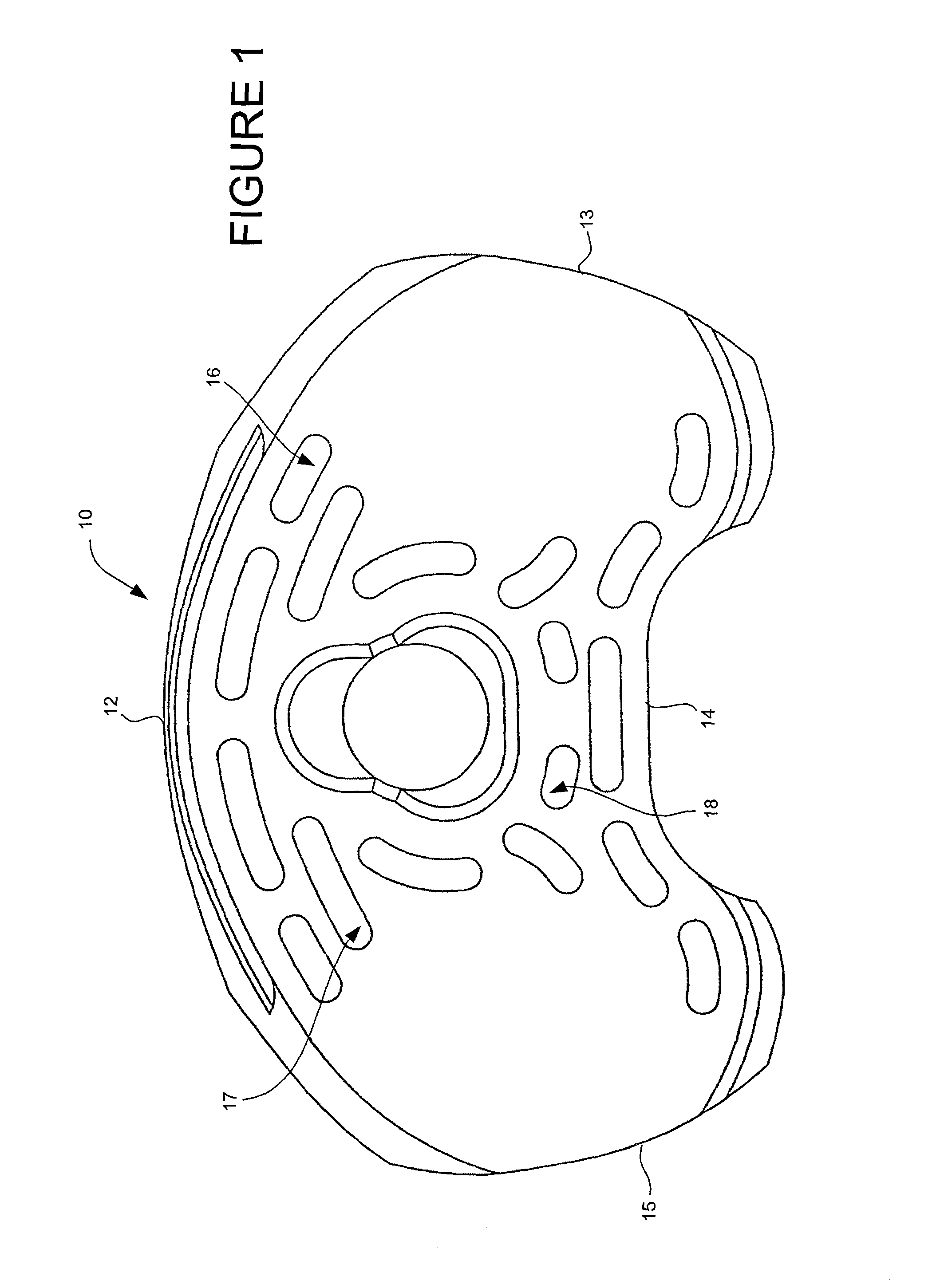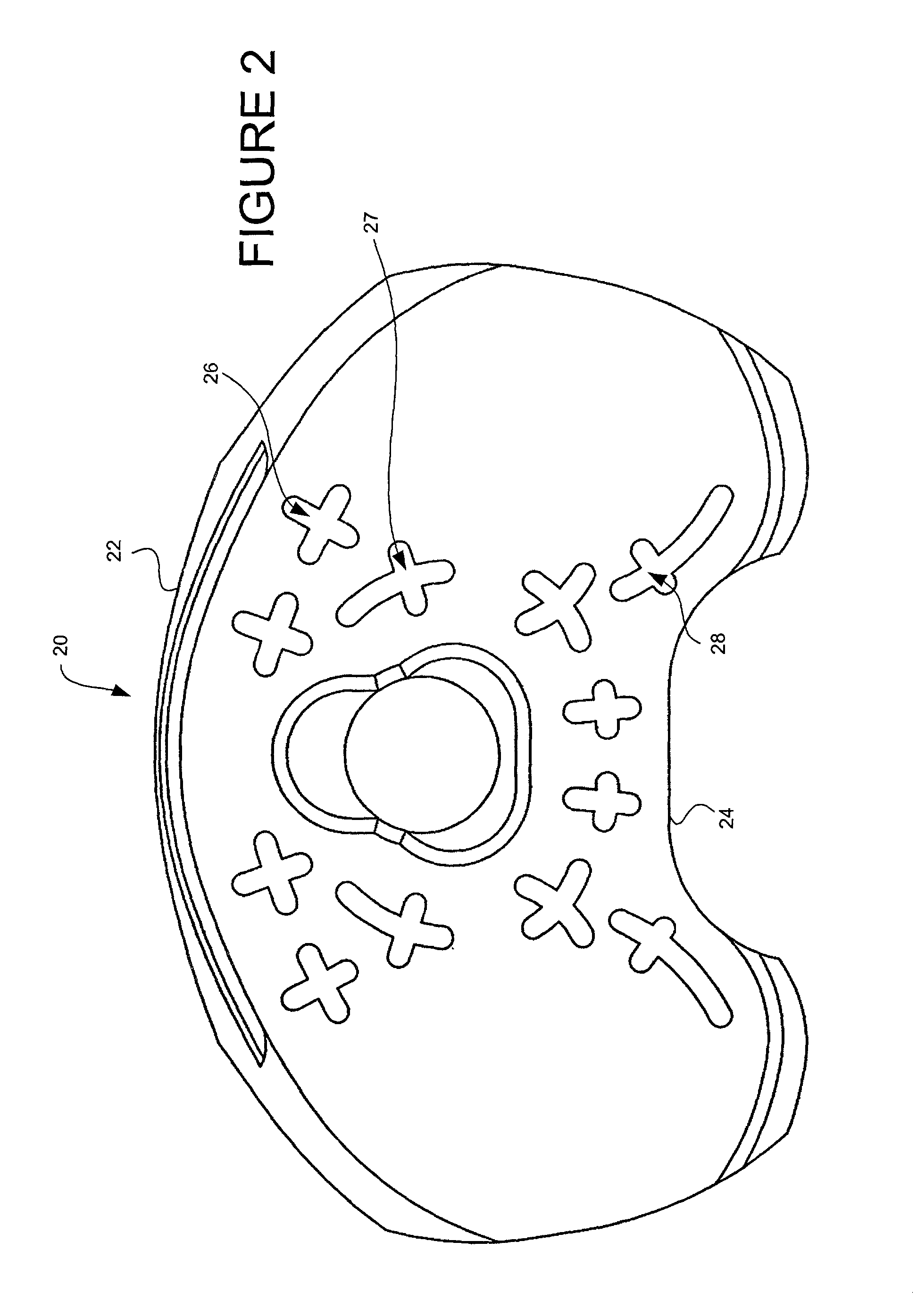A common problem involved with joint replacements is the high wear rates that occur once the components have been implanted.
This increased wear causes the need for increased replacements and revisions, which are commonly more labor intensive, more expensive, and more traumatic to the surrounding tissue and bone.
The insert is not constrained, so that it can move in the anterior-posterior direction and / or the medial-lateral direction, which often creates considerable wear.
(Other joints also experience wear due to sliding movement.)
The reduction of
wear debris generated by orthopaedic devices is one of the leading issues regarding long term performance of orthopaedic joint prostheses.
Wear debris has been associated with adverse biological responses which can lead to local
cell death (
osteolysis for bone cells), premature loosening and failure of orthopaedic devices, and subsequent need for revision
surgery.
Additionally,
abrasive third body debris, such as
bone cement (for example, polymethylmethacrylate ("PMMA")
bone cement) and bone debris may migrate to the interface between bearing or articulating surfaces, further accelerating
abrasive wear due to so-called three body motion.
Another factor that can influence
implant stability and wear is the frictional force generated at the interface between the bearing surfaces.
For example, many cases of premature loosening of hip components have been attributed to excessive frictional torque between the
femoral head and the
acetabular component.
Increased friction is also a direct indication of
adhesive interaction, or
solid-
solid contact between bearing surfaces and typically results in increased wear of one, or both bearing surfaces.
As discussed above, one of the problems encountered with
mobile bearing systems is the constant wear that occurs between the bearing and the tibial and / or
femoral component due to articulation.
These problems are, of course, also encountered with other types of
artificial joints.
Additionally, wear particles created by the friction between these materials are suspected as leading to loosening of the
prosthesis.
In some instances, however, these
lubrication models do not work or cannot be tolerated because they introduce undesired contaminants or other undesired physical characteristics into the process of the device.
Circular diameters greater than 0.8 mm cause the area of the projected portions to decrease so that the projected portions cannot support the loads, sliding and lubricating properties are deteriorated due to wear of the slide surface, and unevenness occurs.
Again, among other things, these references fail to suggest that the depths of the recessed portions can be beyond the 1 mm limitation, as well as fail to consider the anatomical properties and various placements of the portions.
Various concepts that these references do not consider, however, are that if the recessed portions are not sufficiently deep,
synovial fluid may fill the recesses and calcify, essentially re-filling the recesses, thus eliminating the benefits sought to be achieved.
Nor do the currently available references consider the benefits of various positionings of the patterns on the surface or the concept of reducing overall areas of wear.
More particularly, about 85% of wear of mobile bearing knee systems occurs on the underside of the mobile bearing device, with only 15% of wear occurring on the topside.
Recent studies conducted on hip replacement systems indicate that the volumetric wear rate of acetabular liners increases with increasing head / cup
diameter.
Essentially, increasing the contact surface in this situation increases the wear suffered, rather than decreases the wear.
That is, the increased wear shown suggests that the theory behind "spreading out" contact stress is overshadowed by the fact that increased contact area causes more wear.
This is commonly a source of friction and wear.
Further, it was shown that a greater percentage of the wear occurred on the underside or inferior portion of the mobile bearing insert.
More specifically, because it has been shown that about 85% of the wear suffered by mobile bearing knee systems occurs on the underside of the mobile bearing device, with only 15% of wear occurring on the topside, the indentations are provided on the underside, or the inferior surface, of the device.
As discussed, these areas tend to show high wear, perhaps even the greatest wear in mobile bearing knee implants.
For design reasons, it may not be desirable to remove area from such locations because of, for example, minimum thickness standards or
load bearing considerations.
On the other hand, there may be a possibility that wear occurs paradoxically at places where the point loads are not the greatest, so that wear is reduced without negatively creating excess deformation of the component by reducing surface area at places where point loads are.
There is still a great amount of wear produced on other areas of the insert.
 Login to View More
Login to View More  Login to View More
Login to View More 


